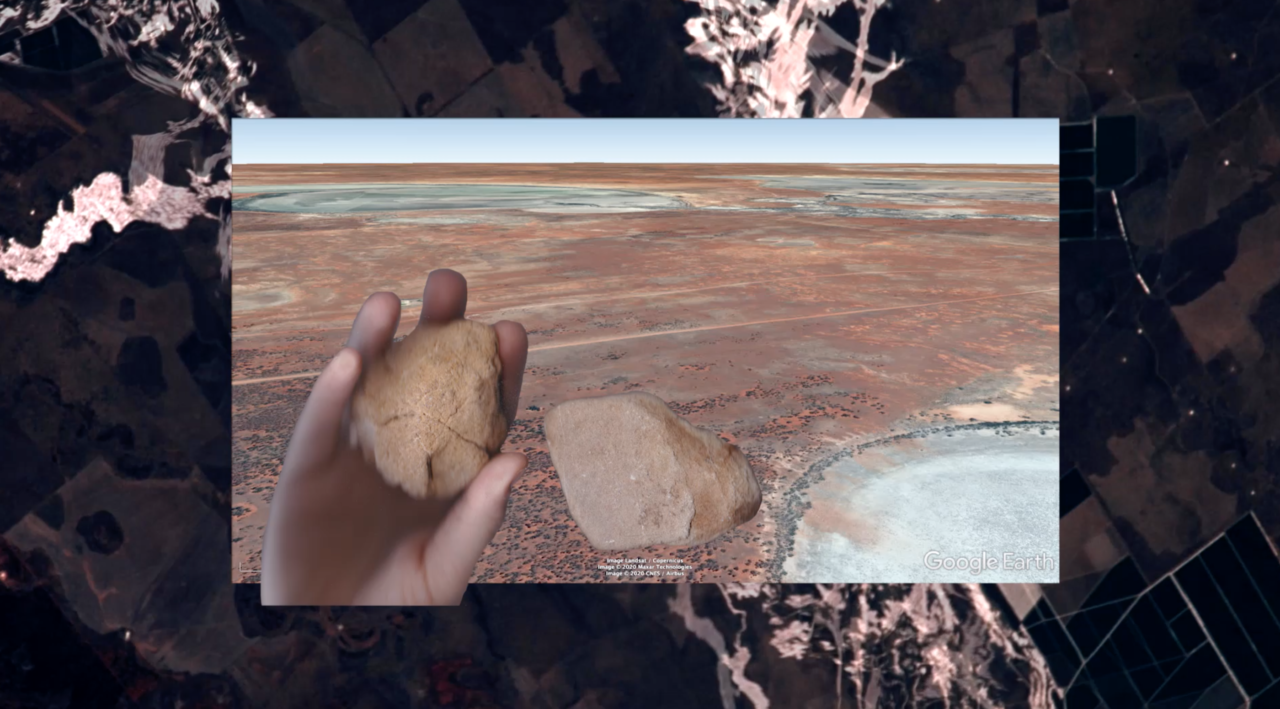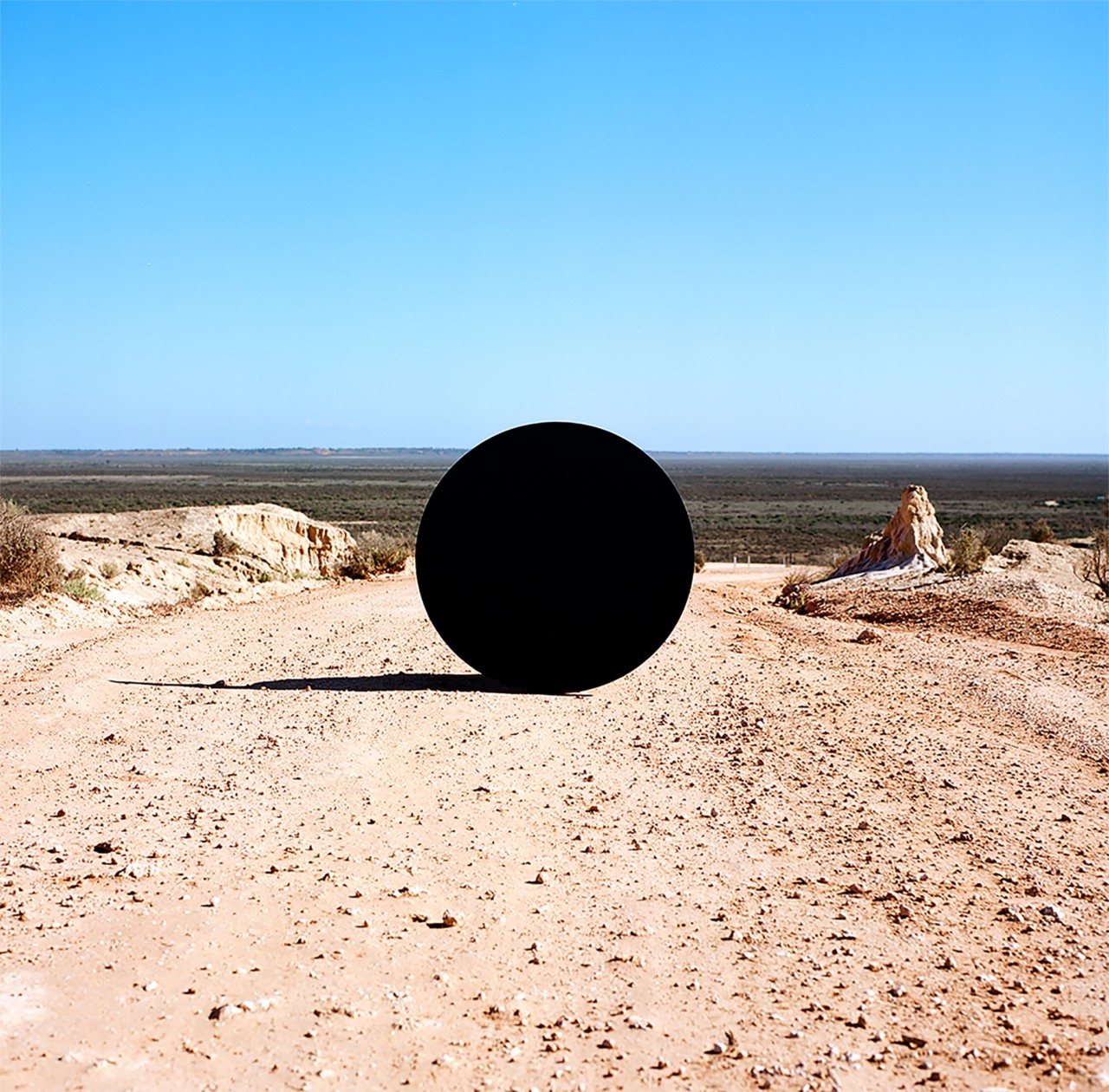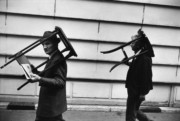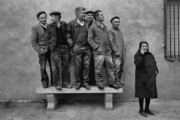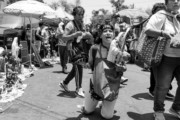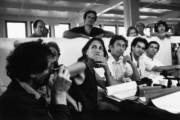New Photography from Melbourne and Beyond
We present work by emerging artists and image-makers who took part in Australian photography festival PHOTO2021
Earlier this year Magnum Learn developed and delivered an intensive educational programme in partnership with Photo Australia. Photo Australia produces Australasia’s largest and most significant photography biennial and in 2021 launched their inaugural festival, PHOTO 2021 International Festival of Photography in collaboration with over 40 cultural institutions, museums, galleries and universities. Responding to the theme of ‘The Truth’, the festival explored the veracity of the photographic image in a time of social media, fake news, and artificial intelligence.
The intensive student programme aimed to prepare a selected group of fifteen emerging photographers for professional practice through a series of online guided talks, workshops and portfolio reviews led by industry specialists. The professionals involved were both national and international curators, artists and educators, from a diverse range of institutions, experiences and backgrounds. They included: Paola Balla (award-winning artist, curator, academic & writer), Gregory & Rachel Barker (STANLEY/BARKER), Emma Bowkett (FT Weekend Magazine), Shannon Ghannam (Magnum Photos), Linsey Gosper (artist, curator and ritual practitioner), Sohrab Hura (Magnum photographer), Azu Nwagbogu (African Artists’ Foundation), Chiara Nonino (Vogue Italia), Elias Redstone (PHOTO 2021), Nicolas Smirnoff (Magnum Photos) and Patrick Waterhouse (photographer and editor).
Here, some of the photographers who participated in the programme present their projects and reflect on what they learned in the process.
Claudia Caporn
“Informed by my upbringing on my family’s wheat and sheep farm in Western Australia, my creative practice is deeply rooted in probing at the essence of human existence in Australia’s rural environments. My work navigates the delicate balance between art and documentary photography, as I merge personal narrative and social documentation. This image belongs to a series, ‘Just East of Now,’ that explores the decay of regional communities in Australia as a result of the unprecedented increase in rural-to-urban migration. Concentrated in my hometown, I use the camera to document the blue-collar people living lives of quiet desperation, portraying everyday struggle and ordinary tragedy, as once-thriving towns are pushed to the precipice of extinction.”
“Although seemingly obvious, what I found profound in its simplicity was the advice to not feel overwhelmed or overcome by the sense of urgency in today’s world. We were reassured that there is so much value in giving your practice and your work patience, time and space to develop, rather than trying to conform to contemporary notions of success and instant gratification. “
Follow Claudia Caporn at @claudia_caporn.
Katherine Wilkie
“Anti-Anthropocene is an installation of sound and moving image showcasing my response to the current state of the ecological crisis,” says Katherine Wilkie, “In collaboration with the land, I want to dismantle the current representations standard photography holds of nature. Currently there is a divide between society and the land and how it is portrayed in landscape photography. What I am aiming to do in my work is explore how alternative photographic processes could change the current representations that society communicates about nature. Adding to the ideas of unlearning the anthropocentric view, I want to create an equilibrium between ourselves and nature.”
See Katherine’s Wilkie’s installation here. Follow Wilkie at @kattwilkie.
Kaitlyn Church
“In 1925 Geelong was chosen as the site of the Ford Motor Company’s Australian Headquarters,” Kaitlyn Church writes, of her photographic project Fordtown. “Opportunity and prosperity quickly followed as many other corporations joined Ford and began manufacturing in the region. But Geelong would become so synonymous with the company that it would be colloquially known as Fordtown. On October 7, 2016, the last engine rolled off the assembly line, thus ending the 91-year long legacy between the Ford Motor Company and the city of Geelong. Fordtown explores the impact that the closure of the Ford Factory has had on the individual worker and the collective identity of Geelong.”
Reflecting on PHOTO2021, Church says, “I found Paola Balla’s discussion on community collaboration particularly poignant. With photography’s problematic history as a tool of oppression and the objectification of people, we as photographers need to be open and considerate when collaborating with or documenting communities. Before beginning a community collaboration, we need to ask ourselves what is our motivation? Have you been invited into the community? What do you have to offer? What are you getting out of the project?”
Follow Kaitlyn Church at @kchurchphotos.
Hamish McIntosh
“For the last few years my work has explored the rapid transformation of Sydney’s built environment,” says Hamish McIntosh, “My images explore the liminal spaces and strange tensions between construction and deconstruction that exist in the landscape of the city, along with the often homogenous and sterile architecture that emerges through redevelopment and globalisation.”
“A key takeaway from the intensive was the importance of revisiting old or abandoned projects. At the time of the two portfolio reviews, I had no current work I felt excited about – so I trawled through my archive to see if I could put something together. I ended up getting feedback on a project I started a couple of years back, and have now resumed it with fresh perspective and enthusiasm. “
Follow Hamish McIntosh at @hamishmcintosh.
Maya Kilic
“Great Escapes is a series of related video works that play with traditions of photography and self-portraiture to depict reality as an interplay of physical, virtual, and imagined realms,” says Maya Kilic, “As the subject of my own work, I am performing a ‘great escape’ from systemic norms of photography and feminine self-imaging by creating new models for documenting ‘the real’ that is more open, playful and imaginative. Using digital photomontage techniques, I virtually integrate myself into a series of phantasmic virtual realities that exaggerate the slippages between dreams and reality, self and other, real and unreal. In turn, transporting the viewer out of the everyday and into the edifice of my fabulist dreamscape.”
“The biggest lesson I took away from the student intensive came from the culmination of photographic practitioners we got to engage with. Hearing from so many different practitioners from all around the world really opened my eyes to just how multi-dimensional pursuing a career in photography can be. A thread of commonality they all discussed was how important it is not to restrict your photographic practice based on traditional modes of photography. On an international scale, the industry is constantly changing and evolving so much! So being true to your practice, consistently learning, experimenting, making, and even failing is imperative for forging your own path as a contemporary photographic artist.“
Watch Maya Kilic’s film on Vimeo here, and follow Kilic at @ _mayakilic.
Jahkarli Romanis
“Over the last few years my practice has involved subverting representations of First Nations people made since settler occupation in Australia,” says Jahkarli Romanis, “It has engaged with disrupting colonial ways of thinking and image making, with the aim to obtain agency over my representation as a Pitta Pitta woman through self-portraiture. It explores my own identity and the construction of that identity through photography, rendering myself visible within a medium that was historically used to misrepresent my people. Through the use of layering I have “submersed” myself back into Country – the landscape that is the link between my 60,000+ year old cultural histories and where I exist now. It acknowledges the importance of Country to my identity, which was not represented in photographs made through the colonial gaze, but also the pain and yearning experienced from being dislocated from this landscape. These are images of an embodied experience, and the embodiment of my indigeneity. I employ photography as a tool to render my identity as a Pitta Pitta woman visible.”
Follow Jahkarli Romanis at @jucromanis.
Celina Rigby
Celina Rigby is interested in exploring everyday life and social issues, creating personal photo-stories of people’s experiences through her documentary practice. Collaborative storytelling is a key method in Rigby’s work as she connects with her participants to create these intimate moments. Her series, Ageing: Retirement Overdue, focuses on why older Australians work past the traditional retirement age. Through her father’s experience of working in his retirement to financially support his family, Rigby portrays a personal perspective of how it has affected him both mentally and physically. This encourages the audience to acknowledge this socio-economic issue within contemporary Australian society.
“During the Magnum student intensive, I learned many valuable points,” says Rigby, “However, there was one lesson that sparked my interest. [Magnum’s Gallery Director] Nico Smirnoff said ‘train your eyes’ — he explained that we should develop our own style in photography for people to recognise our work.”
Find Celina Rigby at celinarigby.com.
Alice Duncan
Alice Duncan’s practice exposes the multifaceted, ever-changing and (most importantly) constructed nature of our personal and cultural identities. Her work and research explores the role image-making plays in contributing to notions of Australian national identity.
Black Hole (Lake Mungo) was created at Lake Mungo, Australia, on the traditional lands of the Barkindji (Pakaantyi), Mutthi Mutthi and Ngiyampaa people. This landscape represents an important, yet often overlooked, natural landmark within Australia. Since the discoveries of ancient human remains in the 1960s, Lake Mungo has been the location of an ongoing and often tense dialogue between Aboriginal people and settlers. In this work, Alice utilises the black hole as a symbol that connects Australia’s recent past with a much deeper history. She often uses this recurring motif to visualise the complexities involved in collectively living on colonised land.
“There were many great things to take away from this intensive,” Duncan says, “The most invaluable was definitely meeting such a diverse range of talented photographers. Especially during last year, it was great to connect with others and share discussions around photography, image-making and the world around us.”
Follow Alice Duncan at @alicelduncan.
Isabella Porras
Isabella Porras is a fourth year Bachelor of Photography student at the Queensland College of Art QLD. Majoring in Documentary, her work explores Australian identity, migration and mental health through an intimate lens. Using a collaborative approach to photography, Porras works closely with her subjects to give them agency and power over their image. This image from her series ‘mother’ is an intimate glimpse into the complexities of her mum’s life; working from home and bearing the weight of domestic duties. Exploring the relationship between mother and daughter, photographer and subject, it is a deeply personal observation of life.
“Taking part in the magnum student intensive was immensely rewarding as I got to meet established and emerging photographers,” says Porras, “What I got most out of this intensive was the talk from Sorab Hura where he encouraged us to really do the work we wanted and establish our own voice unique take on our work.
Follow Isabella Porras at @bellaeva99.
Adele Wilkes
“Of Rats and Roses is an ongoing long-term documentary project, following the life and transformation of Milly Rose, a multifaceted punk provocateur with a love for dressing up,” says Adele Wilkes.
“When we began the project, I knew Milly as a male named Rat, who had invented upwards of twenty alter egos and storylines that were woven into weekly public outings. Not long into documenting this, Rat decided to become Milly Rose, and the project adapted and grew from there.”
Describing herself, Milly Rose paraphrases Kris Kristofferson’s lyrics – “I’m a walking contradiction, partly truth and partly fiction”.
“One of the many valuable lessons in the Magnum intensive came from photographer Sohrab Hura, who reminded us that ‘images are just the residue of something far more important’” says Wilkes.
Follow Adele Wilkes at @adele.wilkes.
Jake Nemirovsky
All that is Solid Melts to Air is an expanded documentary work by Jake Nemirovsky that emerges from the all-pervading sense of precarity that saturates the contemporary consciousness. Ominous moments are drawn together into a foreboding narrative of non-specific anxiety; an overarching, post millennial unease.
Drawing on the language of cinema, the work moves between the real and non-real, between certainty and doubt, attempting to seek out meaning in a reality that is increasingly destabilised by the echo chambers of social media, mainstream media, advertising and political rhetoric. The work forms out of a process of wandering and getting lost, the camera pricking the surface of the visual world to reveal new perspectives on the lived experience. The work seeks to blur distinctions between the real and the fictional, reassessing documentary image making conventions in light of an unfolding, post-truth world.
“I’d say a lesson that I got out of the program was the reminder to continue to pursue the work/art that I want to do,” says Nemirovsky. “At the end of the day we make work about things that are important to us as individuals. There isn’t a magic answer to be successful as a photographer, but if we do make work that is important to us through our own perspective and understanding of the world, eventually people will notice. To paraphrase Sohrab Hura ‘break the rules, push against expectations’.”
Follow Jake Nemirovsky at @nemiroj



